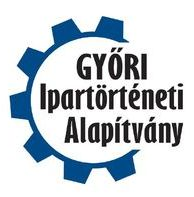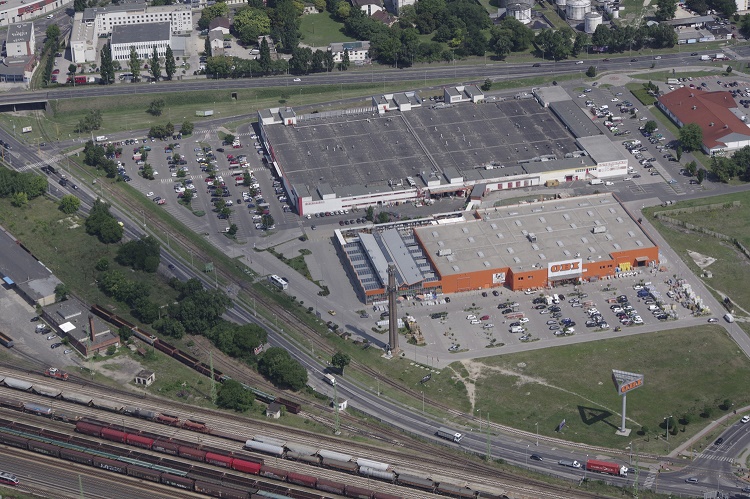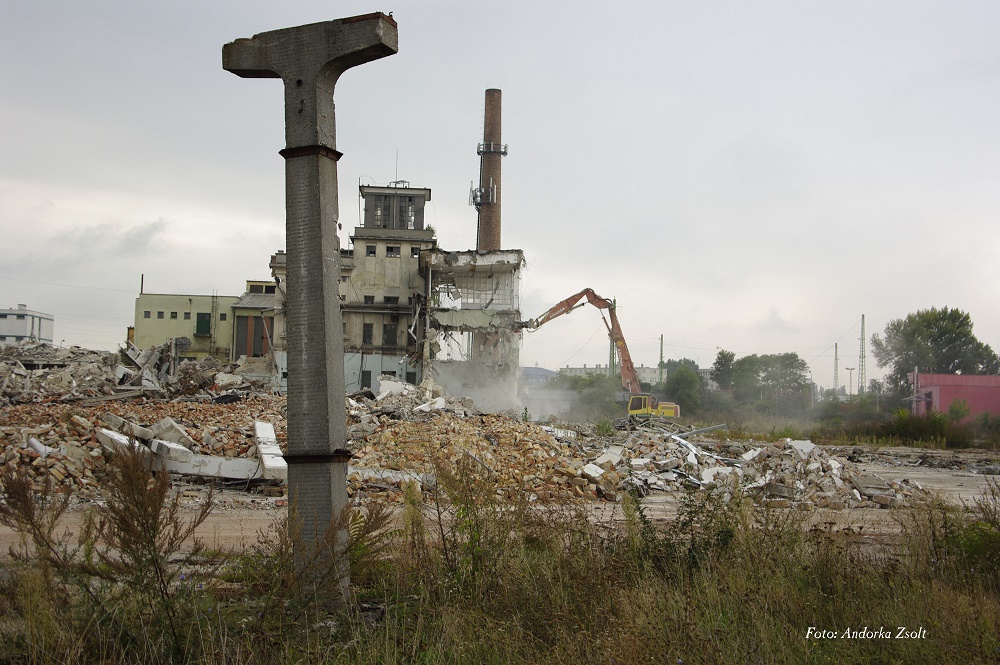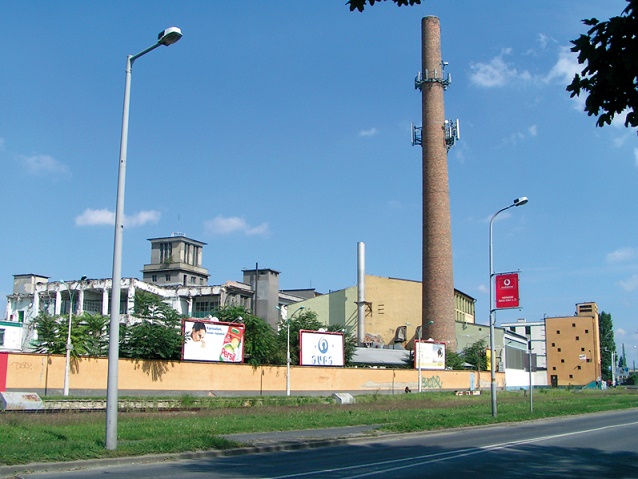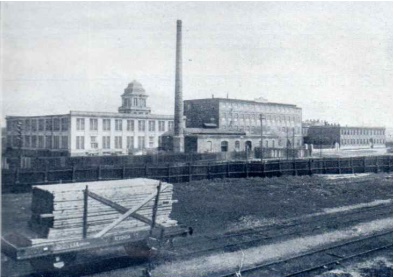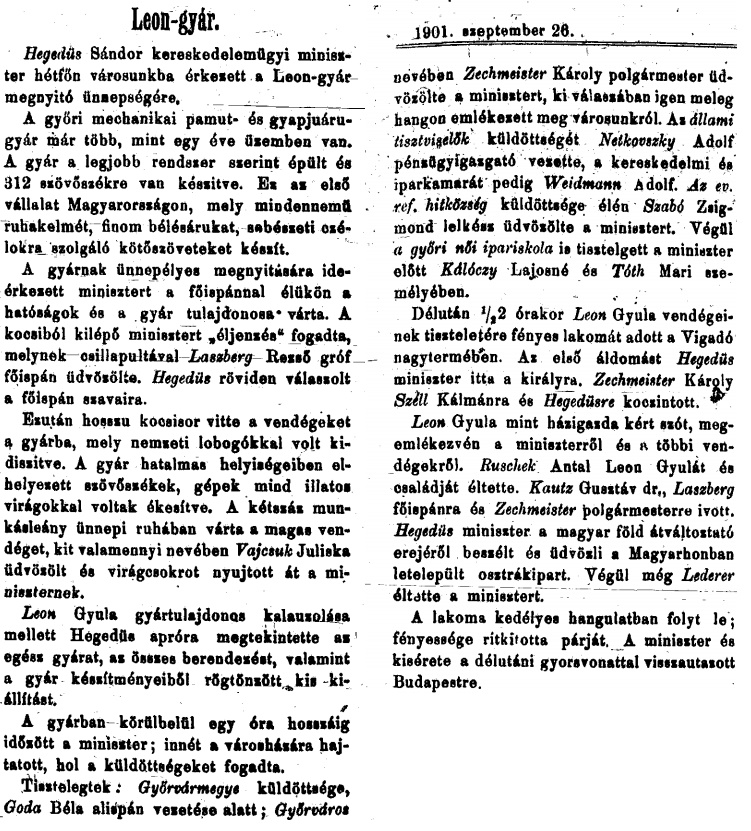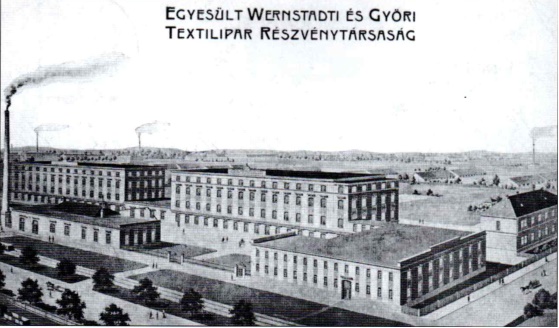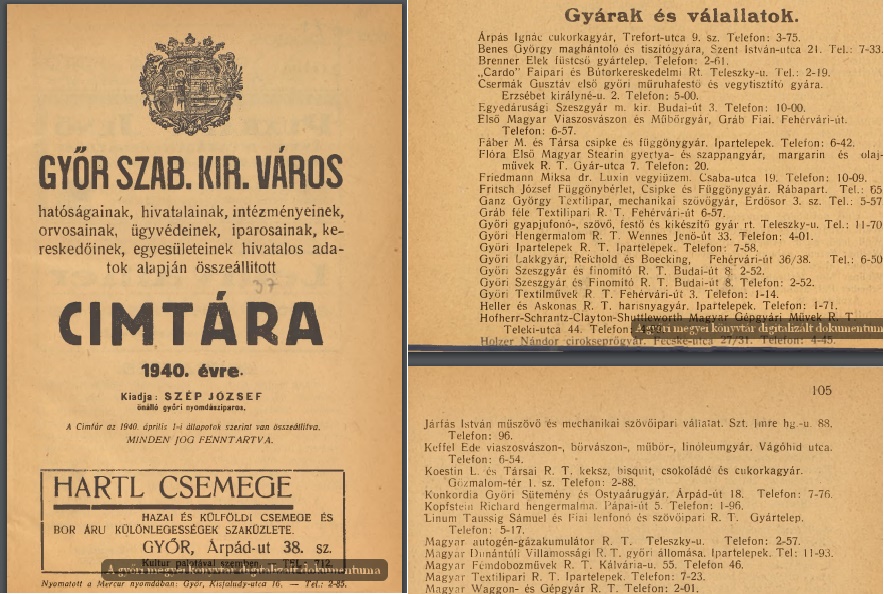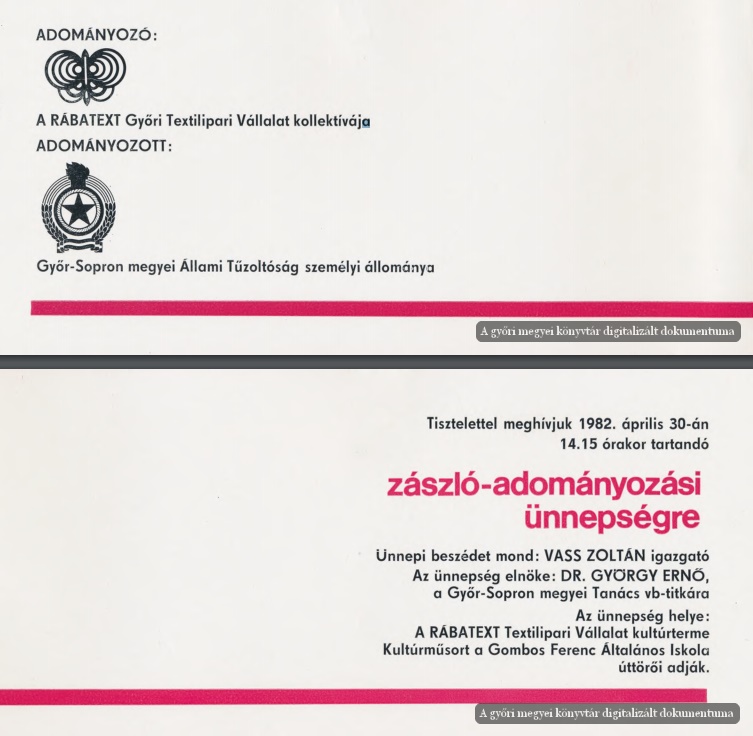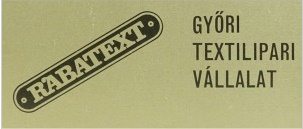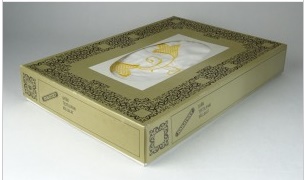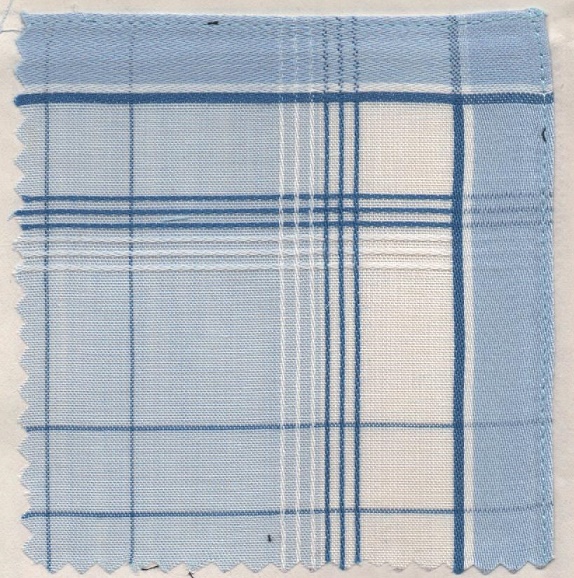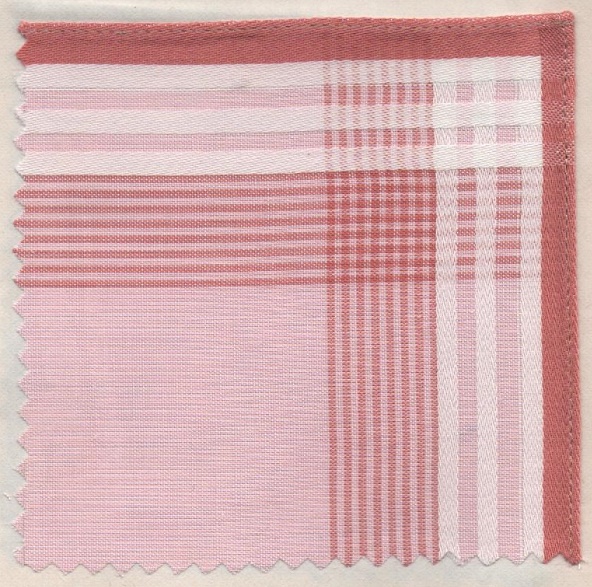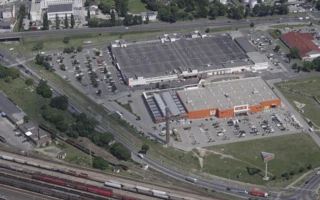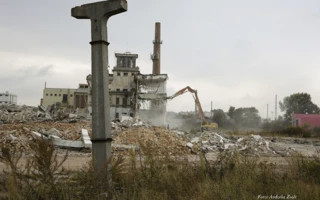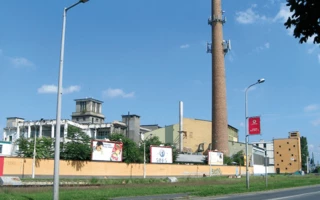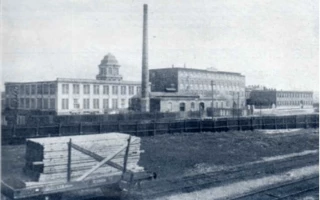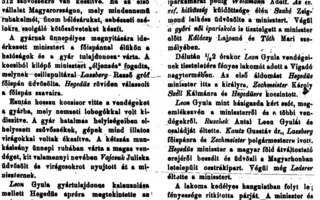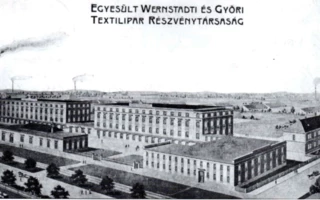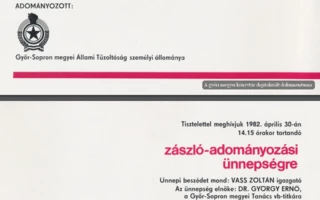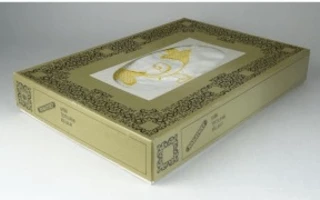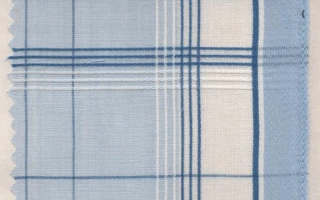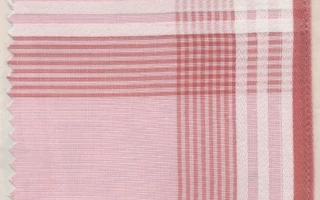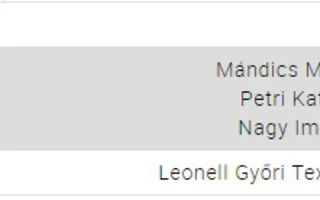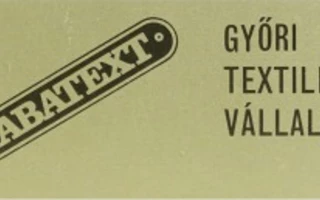Contact details
Foundation for Industrial History of Győr
Szent István út 10/a
Phone:
+3696520274
Fax: +3696520291
E-mail:
ipartortenet@ipartortenet.hu
Map
Hungarian Mechanical Cotton and Wool Fabric Factory
| Adress of the memorial, route planning | ||
| What can we see at the memorial? | ||
| Brief overview | ||
| Detailed Company History | ||
| Facts | ||
| Literature, references | ||
| Related gallery | ||
| Next station of the circle tour I |
| ADRESS OF THE MEMORIAL, ROUTE PLANNING |
| WHAT CAN WE SEE AT THE MEMORIAL? |
The former site of the factory is located in the area between the factory-town section of main road 1 crossing Győr (Szent István út) and Vágóhíd utca.
The plaque can be seen in the only surviving factory building, in the former web of SPAR, which now operates as a SPAR shopping centre.
Under the slab, some elements of contemporary air technology can still be found in the building, but in addition, nothing indicates the previous industrial function of the facility.
The other surviving building of the Győri Textile is the factory chimney rising next to Fehérvári út, which stands on the OBI store area. Losing its original function, it is used today as a repeater station.
Street view:
Tudta-
Aerial photography from today:
The former textile factory is only reminiscent of the chimney and the building of the SPAR shopping centre.
Aerial photo: Zsolt Andorka
Pictures of the demolition:
Breakdown of the Győr Textile (2008)
Photo by Zsolt Andorka
The Győr Textile from Fehérvári út, in the foreground the semi-degraded plant building (2006)
Photo by Zsolt Andorka
A picture from the past:
| BRIEF OVERVIEW |
|
The textile factory of the Vienna plant, Julius Leon, the Hungarian Mechanical Cotton and Wool Fabric Factory was inaugurated on 23 September 1901. The factory was the first in contemporary Hungary, which made all kinds of clothing, fine lining products and bandages for surgical purposes. The Leon factory, as it was commonly mentioned, was destroyed in 85% at the end of World War II. After the nationalization, the plant continued its work under the name of the Hungarian Textile National Company. Győri Fonoda was merged with Textill in 1962, thus the production vertical became complete again. In 1978, the factory adopted the name Rábatext Textile Industries Company. In 1985, the management of the company divided the mammoth company with two sites (the fonode at 10 Puskás Tivadar út and the jar of Fehérvári út 3) into smaller units. The joint venture of the Győr Textile Works Ltd. was established on 21 December 1989. Next to it, the Rábatext Textile Industry Company continued to operate. Uniontext Textilipari Kft., which was established during the liquidation of the Győr Textile Works Ltd., had 1200 employees, and the company was acquired by Graboplast Rt. in 1995. After several changes in ownership, the loss-making company already existed under the name Leonell Textilipari Kft. was closed in 1994. |
| DETAILED COMPANY HISTORY |
The Vienna industrialist, Julius Leon, received free plot of land from the city, a brick for the construction, and customs and tax allowances free of charge. It was also promised to exclude the competition that the city’s management would not give permission for the construction of a new textile plant within a 20-kilometre radius.
The Hungarian Mechanical Cotton and Wool Fabric Factory was inaugurated on 23 September 1901.
The Transdanubian Newspaper, 26 September 1901 No. 78. page 4-5
Source:http://edok.gyorikonyvtar.hu
The factory is named after 1905 in the United Wernstadt and Győr Textile Industry Rt.
After Trianon, most of the shares of the Győr Textile Industry Ltd. were acquired by the Anglo-Hungarian Bank.
The 1940 directory includes the Hungarian Textile Industry Co. and the Győr Textile Industry
source: http://edok.gyorikonyvtar.hu/?docId=52525
At the end of World War II, 85% of the textile factory was destroyed. After the nationalization, the plant continued its work under the name of the Hungarian Textile National Company. Győri Fonoda was merged with Textile in 1962, thus the final of production became complete again. In 1969 János Marton was appointed as the owner of the factory. After his retirement, Zoltán Vass took over the role of director from 1977.
The factory, which works predominantly with a woman’s workforce, has perpetuated the labour shortage, in which they tried to alleviate partly by deporting production to the countryside. The older, but still appropriately technical machines were installed in the surrounding villages (Abda, Bősárkány, Csesznek, Győrújbarát, Kapuvár, Kisbarát, Rábapatona, Várgesztes) to be employed in the local workforce. The management of the factory – of course with the approval of the Minister of Specialist Affairs – asked the American Werner Organizing Institute to screen the Győr plant. On the advice of the institute’s staff, they purchased 167 automatic weaving machines, which produced 30 to 32 million square meters of finished goods.
In 1978 the factory adopted the name Rábatext Textile Company. The refurbishment of the machine park in the cellar was completed in 1978.
Invitation of the flag-donation ceremony of RÁBATEXT Győri Textile Company, 1982
Source:http://edok.gyorikonyvtar.hu/?docId=24186
In 1985, 2,548 workers generated production value of HUF 1 billion 383 million. After the legislation allowing transformation, the management of the company considered to divide the mammoth company with two sites (the Fonoda at 10 Puskás Tivadar út and the weaving of Fehérvári út 3) into smaller units. The Rábatext Energy and Mechanical Engineering Service Ltd. With the formation of 1 December 1988, the dismemberment of the large company began.
1986 Award-winning product of the Industrial Design Award
The transformation of the Rábatext Textile Company took place with the participation of Duna Bank and the Austrian Getzner AG. The Győr Textile Works Rt. Joint Company was established on 21 December 1989 with a capital of HUF 480 million. Next to it, the Rábatext Textile Industry Company continued to operate. Nearly half of its shares were owned by a Viennese merchant, Ivan Holler, 24 percent and 26% respectively by the Győr textile company and Duna Bank, while the remaining 2% were owned by the employees. In addition to the big transformation, smaller companies have also been formed, which undertook to produce and manufacture fashion items, handkerchiefs, bedding, textile products, distribute textile products, provide business organisation and computer services, and even the repair of passenger cars.
Bed linen set
The newly formed Ltd. had independent economic power and capital, and the buildings and assets were rented from the parent company. They were generally not effective, most of them were destroyed.
The capital increase and the revenues from the factory building sold to DIEGO shop used to make it possible to improve the weak technological points. For 240 million HUF, the rest was spent on the financing of the newly formed companies.
At the end of 1990, at the issue price of 300 shillings, a share of HUF 400 million was issued on the Vienna Stock Exchange.
In 1991, the handkerchief produced here received the "Form Design Quality Award" award, of which 7.6 million units were delivered to Japan.
In April 1992, the listing price of shares was only between 69–93 schillings, so the owner of Győr stopped selling. The company’s loan portfolio swelled so much by 1992 that the Hungarian Credit Bank Rt. Győri’s Account asked the owners to increase the collateral collateral, which was not voted on by the general meeting, so the largest creditor initiated the liquidation of the joint-stock company.
During the liquidation of the Győr Textile Works Ltd., Magyar Hitel Bank Rt. became the owner of the company’s building, machines and stocks, and the founder of the single-member company. At that time, the company had 1,200 employees. The bank appointed a corporate commissioner to the head of Uniontext Textilipari Kft. and kept all of its employees.
In the spring of 1995, Graboplast Rt. acquired the majority of the shares of the Soproni Carpet Factory and the Uniontext Kft. in Győr. Graboplast Textile and Artificial Leather Co. has invested a significant machine investment at Uniontext, and since then the raw material has been produced by the new owner. In the autumn of 2000, Graboplast sold 74.9 percent of the company to Albertfalvi Cérnazási Kft. in Budapest.
Uniontext 2000 declared bankruptcy in March 2003, and instead of a starting price of HUF 480 million, Csárda-Tex Kft. from Békéscsaba bought it for HUF 100 million + VAT.
The new owner wanted to continue employing 306 people at the company now known as Leonell Textilipari Kft. The hopes did not work, production stopped in 2005 at Leonell Textilipari Kft. in Győr and the majority of the workers were dismissed, the company was liquidated and a Spar shopping mall was built in its place.
The Győr-Moson-Sopron County Court launched the liquidation of the company on 10 August 1992, which was closed on 26 September 1994, and the company was removed from the company register in 1996.
The compilation is Mrs. Orbán dr. It was based on the study of Márta Horváth.
| FACTS |
|
Before the appearance of the tissue, one of the main products of the textile factory was the handkerchief. In 1949-51, handkerchief production gradually started on wide weavers, and in 1955 the handkerchief was woven on 120 rabbit coils, some of which were sold abroad. In the same year, the nail factory started, so the three basic operations of handkerchief manufacturing – weaving, finishing, breaking – could be solved locally. Framed handkerchief: where the ribs are right next to the part to be broken Narrow ribbed framed handkerchief: the width of the ribs does not reach one cm |
|
The Austrian merchant Ivan Holler, who owned 48% of the shares of the Győri Textileművek Rt., left Hungary as Iván Holler in the 1960s. He defected to Italy, where he traded in jeans and founded trousers in Austria in 1978. Holler’s company also delivered fashion items and trousers to Hungary. The Győr Textile Company has become a supplier to Holler’s trading company in Hungary, so the Hungarian company became contact with Holler, who became the largest investor in the Hungarian textile industry. |
|
Name variations: |
||
| LITERATURE, REFERENCES |
- 2014. Márta Orbánné Horváth: The transformation of the textile industry in Győr from 1985 to the present day. Included: From the Hungarian Mechanical Cotton and Wool Fabrics to the Győr Textile Works Company. Yeah. The drivers of Győr’s development. Monographs of the research of the automotive industry district of Győr as the new direction and tool of regional development 1. Győr, Palatia Printing House. 162–165.
- 1987. Mrs. Lajos Kovács: Rábatext. Handkerchief, 1955–1987. Local knowledge. 61 p.
- 198? János Forgách: Léon Gyula First Hungarian Mechan. Cotton and Wool-Customery in Győr. Local knowledge competition. 57 p.
- 1977. Rábatext. Győr Textiles Company,1902-1977. Photo by Miklós Katona. Published by the Hungarian Advertiser, Győr. 16 lev.
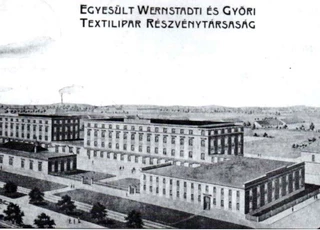
Related gallery
Back to the previous page!
